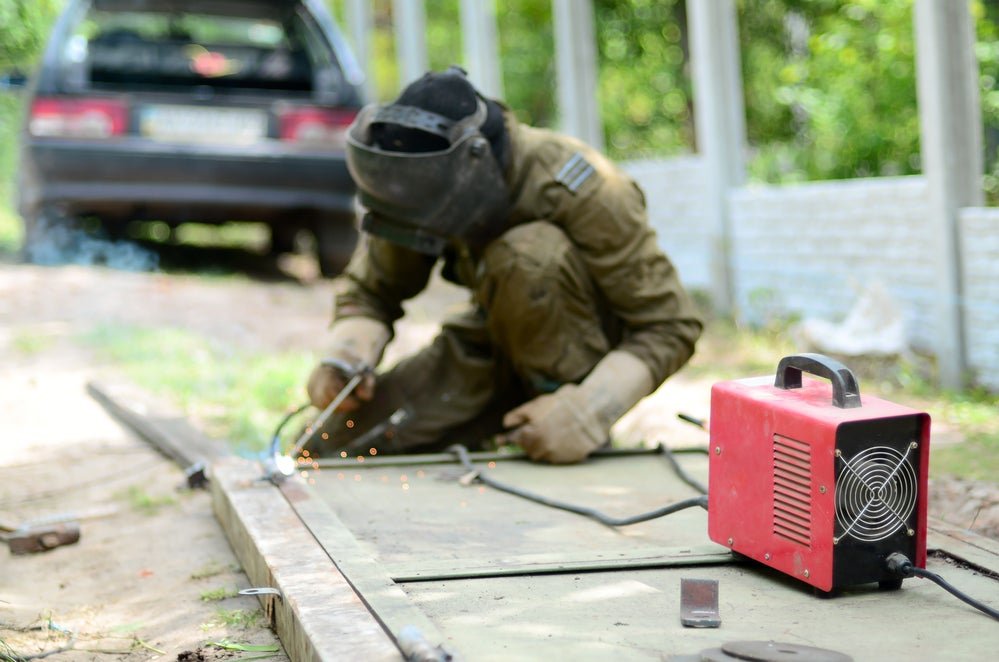MIG (metal inert gas) welding, otherwise called gas metal curve welding (GMAW), is by and large acknowledged as the most straightforward kind of welding to learn. However, with the proper hardware, MIG welding can deal with a scope of thicknesses and proposition the speed requested by professionals. With gasless MIG, a component of many welding machines, welding outdoors is likewise conceivable.
MIG welding is famous, and a wide range of gear is accessible. This can prompt reasonable disarray, especially for purchasing the best MIG welder. We propose the best MIG welders to tackle a scope of welding difficulties and suit various clients’ requirements. Our thorough article makes sense of the specialized perspectives.

What to Consider When Choosing the Best MIG Welder
MIG welders change from financial plan models ideal for a home studio to high-limit hardware for the professional. Of course, considerable variation exists in both ability and intricacy. In the accompanying segment, we look at the vital specialized and performance that influence decisions.
Obligation Cycle
Indeed, even the best MIG welders can’t constantly run at full power; they need successive separates to cool. A MIG welder’s runtime ceaselessly is referred to as the “obligation cycle,” and it’s generally communicated in 10-minute rates. Welding past the obligation cycle gambles with causing severe harm to the machine.
The obligation cycle frequently isn’t cited at full power. For example, we looked at a few 140A (amp) MIG welders who quote the obligation cycle at 90A. This is significant because the obligation cycle is more minor while running at the full 140A. For instance, if a MIG welder’s obligation cycle is 30% off, it can run for 3 minutes, after which it needs 7 minutes of rest. MIG welder obligation cycles run from 20% to 60 percent.
Force, Voltage, and Amps
Voltage (V) is how much power the MIG welder expects to work. The name might state it at 115 or 120V; however, in pragmatic terms, there is no distinction. Section level gear is typically evaluated at 110V, implying it may be connected to any family attachment very well. The 220V choice (which might be set apart as 230V or 240V) is typically professional-standard hardware that requires the utilization of a generator for site work or a committed attachment in the studio. Double voltage MIG welders offer the adaptability of exchanging between the two; however, they only occasionally produce full power at the lower voltage.
Amperes (A), as often as possible just communicated as “amps,” are the current accessible for welding. The higher the amps, the thicker the metal the welder can deal with.
Material Density
Ordinarily, a 90A MIG welder can weld steel up to ⅛ inch thick, while a 200A model can weld ⅜-inch steel. Nonetheless, the last option might require a 220V stockpile to weld this thickness, so purchasers should consider both amp and voltage figures. Producers commonly provide the applicable information.
Clients should comprehend MIG welding strategies, and taking a novice welding course merits consideration. The thicknesses cited are the greatest that anyone could hope to find in one pass; in any case, they aren’t generally pretty much as prohibitive as they sound. For instance, it’s usually expected to weld different sides of a thing to join more prominent thicknesses.
It’s a typical misinterpretation that MIG welders can weld thicker aluminum since it’s a milder metal. Its thickness is diminished by around 20% because aluminum assimilates more intensity than steel.
Gas or Gasless and Portability
MIG welding requires a safeguarding gas to make a protective air pocket around the weld as it’s being formed, which keeps pollution in the air from debilitating the weld. Gas bottle sizes fluctuate, yet most are around 4 feet tall and generally cumbersome. Welders frequently utilize a mix of argon and Co2 (carbon dioxide). However, Co2 can, at times, be used all alone.
Gasless MIG welding, which utilizations transition center wire, is an option since it makes its safeguard as the wire softens into the weld. This technique benefits MIG welding outside because the breeze can upset a standard gas safeguard. Be that as it may, the motion center produces more smoke, an undesirable smell, and a coarser weld. The weld can be an area of strength for comparably; it might require more work to tidy up. Likewise, the motion center wire is just accessible for mild steel.
MIG welders can be gas, gasless, or both. Trucks are accessible to mount an MG welder and gas bottle, yet while they add mobility, they are neither little nor light. Without the requirement for a gas bottle, gasless welders are significantly more compact. Additionally, consider the MIG welder’s heaviness, which can shift from under 20 pounds to the north of 70 pounds.
Cable-Feed Speed and Settings
The kind of wire should be appropriate for the type of metal. In MIG welding, clients soften a wire to join two bits of metal. Hence, clients need different wires to weld steel, aluminum, copper, and so on—the width of the wire, which connects with the thickness of the metal being joined, likewise shifts. Graphs are generally accessible.
Wire takes care of the weld naturally, and clients can change the speed. Feed speed is generally given in inches each moment (IPM); however, now and again in yards each moment. The more noteworthy the reach, the more adaptable the MIG welder, is to match the feed rate to the abilities of the welder, might step settings in that they have a few fixed speeds; notwithstanding, the best MIG welders offer numerous varieties in speed.
1- Best For Almunium: YESWELDER MIG-250 PRO Aluminum MIG Welder, 250Amp
Welding aluminum is testing because although the metal is similarly delicate, it retains heat rapidly, implying it’s challenging to keep hot. The strong YESWELDER MIG-250 Pro provides a viable arrangement.
It offers the two gas and motion center modes and can weld a great ½ inch of mild steel. While the producer doesn’t supply a definite figure for aluminum, it’s logical around ⅜ inch. In addition, the 60% obligation cycle at full power is remarkable. In any case, this model requires a 220V stockpile. However, it involves inverter innovation to keep energy consumption as low as expected. Also, get 30% off using the Yeswelder Discount Code.
The YESWELDER MIG-250 Pro likewise offers TIG and stick capacity. However, the TIG light is extra. It weighs 34 pounds. Its wire-feed speed is somewhere in the range of 79 and 590 IPM.
Product Specs
- Amps: 30A to 250A
- Obligation cycle: 60% at 250A
- Gas or gasless: Both
Pros
- MIG, TIG, and stick capacity
- Phenomenal obligation cycle
- Cutthroat price
Cons
- 220V as it were
- TIG light is extra
2- Best Overall: Forney Easy Weld 261, 140 FC-I Welder, 120V
Trying to pick the single best MIG welder is a complicated task. Clients have diverse needs, and a variety of options are available. Chose the Forney Easy Weld 261 because it is excellent all-around welding equipment. It’s simple and lightweight (just 19 pounds), and it meets the performance requirements of both home welders and professionals.
The Forney runs off conventional power. It utilizes a transition center wire. Clients must choose the voltage (which generally changes) and pick the wire-feed speed. While the last option offers 10 stages, the maker doesn’t provide the actual figures. Speed doesn’t influence weld strength. However, it affects productivity. For additionally accomplished welders, even the maximum velocity might be somewhat sluggish.
The welds made with the Forney may not be as slick as those made with a gas MIG, and they can’t handle hardened steel or aluminum. In any case, for those who routinely weld mild steel, inside or out, the Forney Easy Weld 261 is cutthroat.
Product Specs
- Amps: 30A to 140A
- Obligation cycle: 30% at 90A
- Gas or gasless: Gasless
Pros
- Entirely compact
- Welds up to ¼-inch steel
- Incredible worth
Cons
- Humble wire-feed speed
- No gas choice
3- RUNNER-UP: Hobart Handler 140 MIG Welder
Hobart stands among the world’s driving welding hardware brands, and the organization’s Handler range is exceptionally well known. The Hobart Handler 140 is its entrance level MIG welder, yet it’s as yet equipped for welding up to ¼-inch sheet metal. Unlike gasless models that weld mild steel, it can also weld impeccable aluminum.
The Hobart Handler 140 operates on standard 110V power. Its wire feed ranges from 40 to 700 IPM, making it suitable for welders of various skill levels. Instead of unlimited fluctuations, the voltage control has five settings. On the other hand, users praise the power supply’s smoothness, allowing precise control of the welds.
At 20%, its obligation cycle isn’t especially great, and its 5-foot power rope is relatively short. Its double process ability additionally intends that, albeit the price of the Hobart Handler 140 is cutthroat for its sort, it costs altogether more than the Forney Easy Weld.
Product Specs
- Amps: 25A to 140A
- Obligation cycle: 20% at 90A
- Gas or gasless: Both
Pros
- Great adaptability
- Eminent quality and strength
- Wide wire-feed range
Cons
- Humble obligation cycle
- Short power rope




